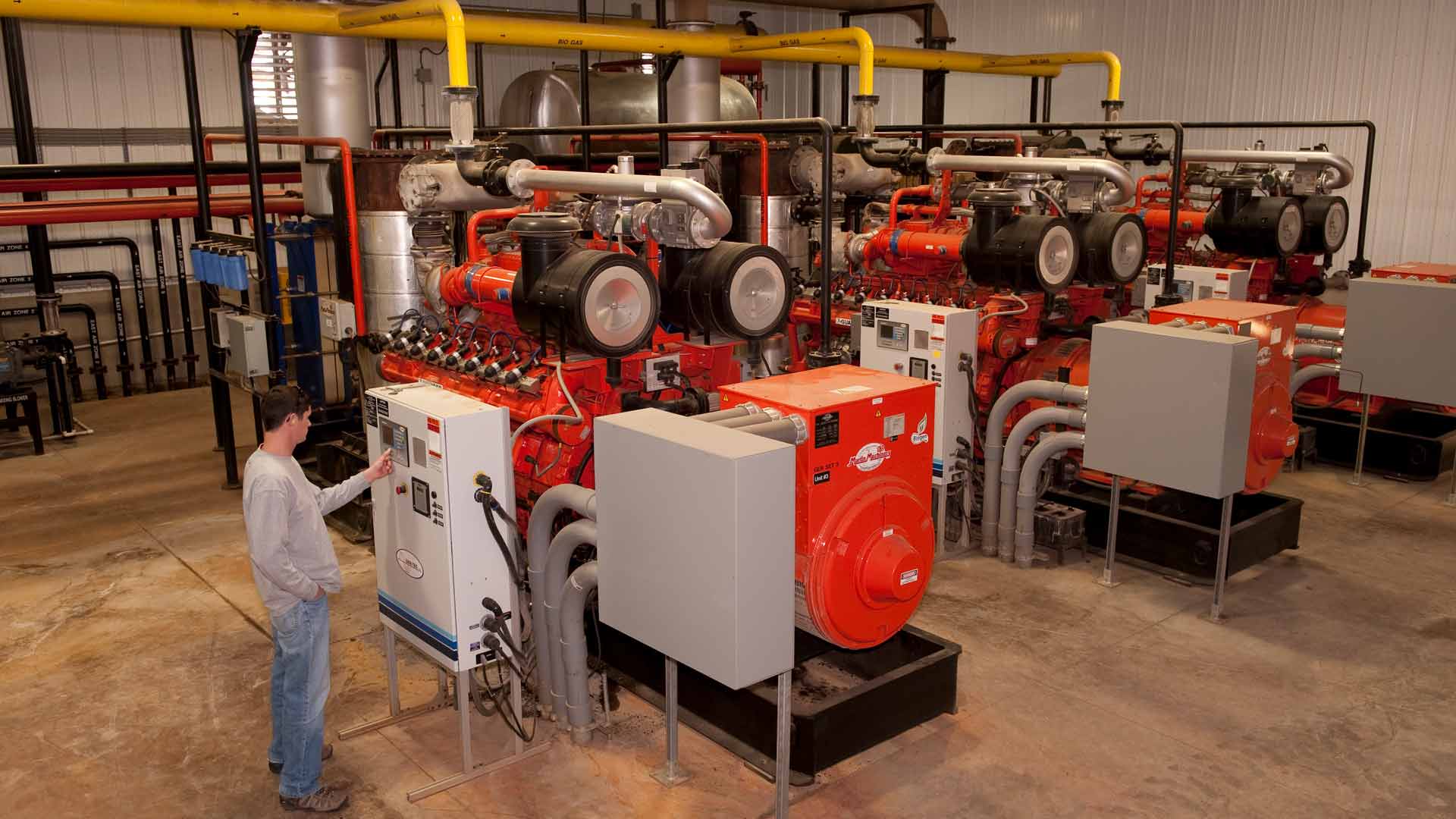Stevens County, Minn. — Minnesota’s largest milk producer makes more than moo juice.
Since its founding in 1976, Riverview has grown steadily, becoming a leader in Minnesota’s dairy sector and developing a reputation for innovation. “Riverview sets the standard for the industry,” says AURI scientist Al Doering, who has worked with the company on several projects.
Today, Riverview LLP milks 30,000 cows at five sites in Stevens and Swift counties. The company also operates anaerobic manure digesters at its three Stevens County dairies. The digesters convert manure into renewable electricity, livestock bedding and fertilizer.
Other Riverview enterprises include cropping operations in Minnesota and Nebraska, calf operations in Minnesota, two heifer feedlots in South Dakota, and a bull feedlot in Nebraska. The company also markets Easy Rake, a patented forage tool invented at Riverview Dairy and manufactured by a Stevens County machine shop.
There’s a strong culture of innovation and entrepreneurship at Riverview, says Adam Zeltwanger, Riverview business developer. “Our focus is on people, our most valuable asset. We believe if you have good people doing what they love to do, innovation will follow. Our motto is ‘Providing a culture of opportunity for passionate people and innovative ideas.’ ”
Expanding and diversifying
Riverview traces its roots to 1939, when Paul and Anna Fehr began farming near Morris. Their sons, Lloyd and Paul, Jr., continued to raise feed crops and beef cattle, incorporating as Riverview Farms in 1976.
In the 1980s and early 1990s, as the third generation of the Fehr family began returning to the farm, the family looked for new livestock opportunities. They built their first dairy facility in 1995, a 1,250-head barn and double-24 milking parlor.
At the time, Minnesota’s dairy industry was shrinking fast, losing ground to modern, efficient milking operations in California and other western states. But the family was convinced that Minnesota offers advantages for dairy production, including abundant feed and water, Zeltwanger says.
Over the next 15 years, the company expanded and diversified its livestock operations, building state-of-the-art milking facilities near Morris, DeGraff and Hancock, in west central Minnesota. Riverview’s high-tech milk production systems include carousel-style milking parlors, automated calf-feeding systems, free-stall barns and electronic identification tags, which allow each cow’s performance and health to be tracked and displayed using Bluetooth wireless technology.
All of the company’s milk is made into cheese at Valley Queen Cheese in Milbank, S.D. The Minnesota Department of Agriculture estimates that every 1,000 dairy cows generate more than $2.5 million in farm revenue.
The vertically integrated company also operates calf facilities at Hancock and Murdock and heifer feedlots at Frankfort S.D., and Clark, S.D. The company’s bull calves are finished at a 7,000-head feedlot at Atkinson, Neb.
The Riverview group now employs more than 400 people. To finance its growth, the Fehr family has offered investment opportunities to neighbors and employees. The privately-held company now has about 200 local shareholders. The dairies are also a boon to local farmers, Zeltwanger says. Riverview buys about 80 percent of its feed, mainly from area growers, and produces enough low-cost manure to fertilize more than 20,000 acres of corn ground a year.
Cow-powered electricity
But milk and manure aren’t the only products coming out of Riverview barns.
The company also operates three anaerobic manure digesters, which produce renewable power. Installed in 2008 and 2010, the digesters capture methane, a natural gas substitute that can be burned for heat or electricity.
Manure is scraped twice daily into day pits under the dairy barns. From there, the slurry is pumped to 16-foot-deep cement digester tanks, which hold about 3.5 million gallons of manure. The manure is heated to 101 degrees for 21 days. As manure moves through the digesters, beneficial bacteria produce methane gas, which is piped to the nearby engine room to fuel commercial-size electric generators. Riverview’s three digesters generate 3.6 megawatts of electricity, which is sold to Great River Energy as premium renewable energy.
After 21 days, the dairy manure — now less smelly than before — leaves the digesters and is mechanically separated. The liquid portion is stored in covered lagoons and injected into cropland each fall through a dragline hose system. The solid portion is recycled to Riverview’s dairy barns as bedding or sold to other livestock barns.
The digesters, which represent millions of dollars of public and private investment in renewable energy technology, “have exceeded our expectations for gas and electricity production,” Zeltwanger says.
“We’re always looking for new and innovative ways of doing things. Our company is growing and expanding in the direction where innovative ideas take us.”
